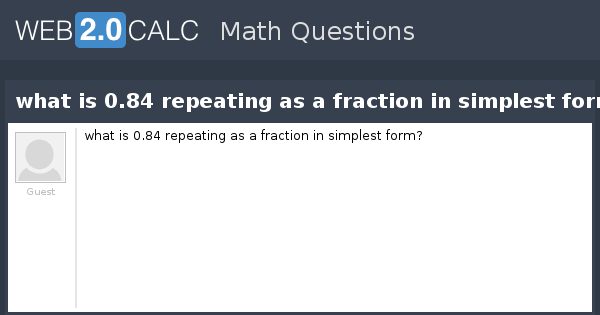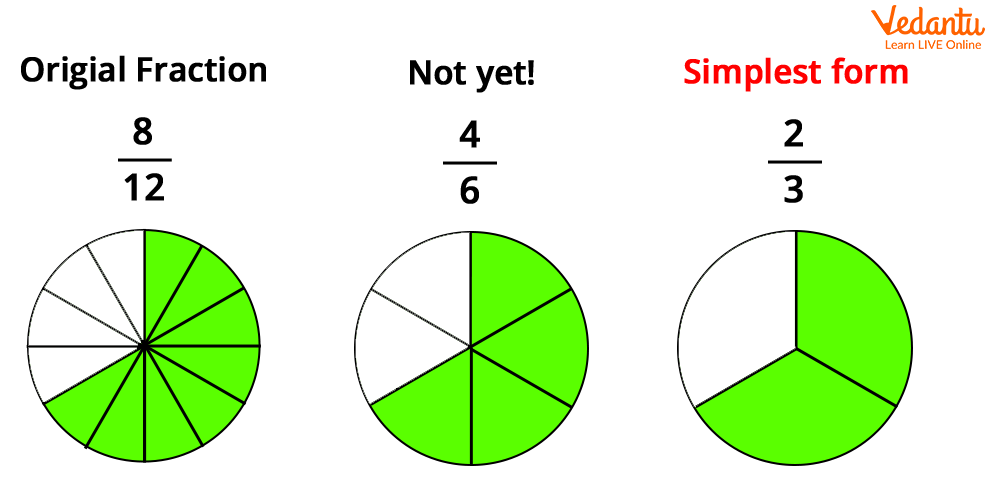Let's talk about converting decimals into fractions. Specifically, we'll tackle converting 0.84 into a fraction in its simplest form.
Understanding Decimals and Fractions
First, it's important to understand what decimals and fractions represent. A decimal is a way of writing numbers that aren't whole numbers. It uses a decimal point to show the fractional part of the number. Think of it like dividing something into parts of ten, hundred, thousand, and so on. 0.84 represents eighty-four hundredths.
A fraction, on the other hand, represents a part of a whole. It's written as two numbers, one on top of the other, separated by a line. The top number is the numerator, and the bottom number is the denominator. The denominator tells you how many total parts there are, and the numerator tells you how many of those parts you have. Think of a pizza cut into 8 slices (denominator). If you eat 3 slices (numerator), you've eaten 3/8 of the pizza.
Converting Decimal to Fraction
Our goal is to change the decimal 0.84 into a fraction. The key is to understand place value. 0.84 has two digits after the decimal point. This means it represents hundredths.
We can write 0.84 as 84/100. We placed the 84 as the numerator, and 100 (representing hundredths) as the denominator. Notice the number of digits after the decimal point corresponds to the number of zeros in the denominator.
So, 0.84 is equivalent to the fraction 84/100. Now we have a fraction, but it's probably not in its simplest form yet.
Simplifying Fractions
A fraction is in its simplest form when the numerator and the denominator have no common factors other than 1. In other words, there's no number (other than 1) that can divide evenly into both the numerator and the denominator.
To simplify a fraction, we need to find the greatest common factor (GCF) of the numerator and the denominator. The GCF is the largest number that divides both numbers without leaving a remainder.
Finding the Greatest Common Factor (GCF)
Let's find the GCF of 84 and 100. One way to do this is to list the factors of each number. Factors are the numbers that divide evenly into a number.
The factors of 84 are: 1, 2, 3, 4, 6, 7, 12, 14, 21, 28, 42, and 84.
The factors of 100 are: 1, 2, 4, 5, 10, 20, 25, 50, and 100.
Looking at the lists, the largest number that appears in both lists is 4. Therefore, the GCF of 84 and 100 is 4.
Another method to find the GCF is prime factorization. This involves breaking down each number into its prime factors. A prime number is a whole number greater than 1 that has only two divisors: 1 and itself (e.g., 2, 3, 5, 7, 11, 13...).
The prime factorization of 84 is 2 x 2 x 3 x 7 (or 22 x 3 x 7).
The prime factorization of 100 is 2 x 2 x 5 x 5 (or 22 x 52).
To find the GCF using prime factorization, we identify the common prime factors and multiply them together. Both numbers have 2 x 2 (or 22) as a common factor. So, the GCF is 2 x 2 = 4.
Dividing by the GCF
Now that we know the GCF is 4, we divide both the numerator and the denominator of the fraction 84/100 by 4.
84 divided by 4 is 21.
100 divided by 4 is 25.
This gives us the fraction 21/25.
Checking for Simplification
Is 21/25 in its simplest form? To check, we look for any common factors of 21 and 25 other than 1.
The factors of 21 are: 1, 3, 7, and 21.
The factors of 25 are: 1, 5, and 25.
The only common factor is 1. Therefore, 21/25 is in its simplest form.
The Answer
So, the decimal 0.84, expressed as a fraction in its simplest form, is 21/25.
Therefore, to convert the decimal 0.84 into a fraction in its simplest form, we follow these steps:
- Express the decimal as a fraction (84/100).
- Find the greatest common factor (GCF) of the numerator and denominator (GCF of 84 and 100 is 4).
- Divide both the numerator and denominator by the GCF (84/4 = 21, 100/4 = 25).
- The simplified fraction is 21/25.
With practice, converting decimals to simplified fractions will become second nature!

